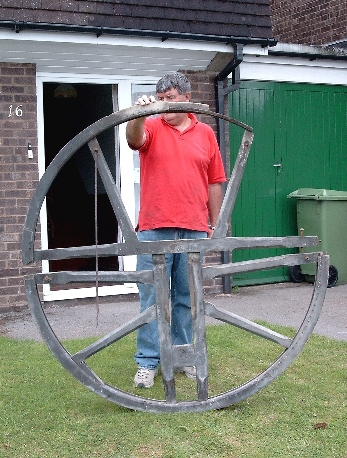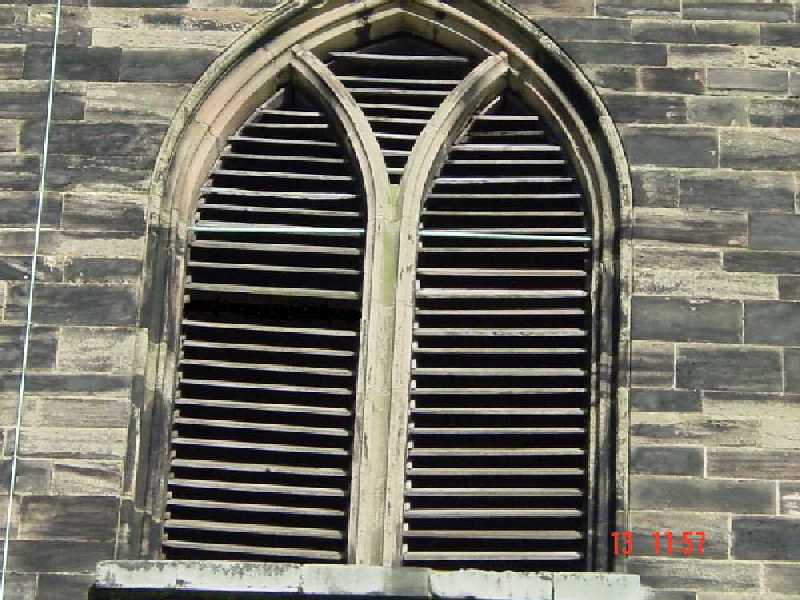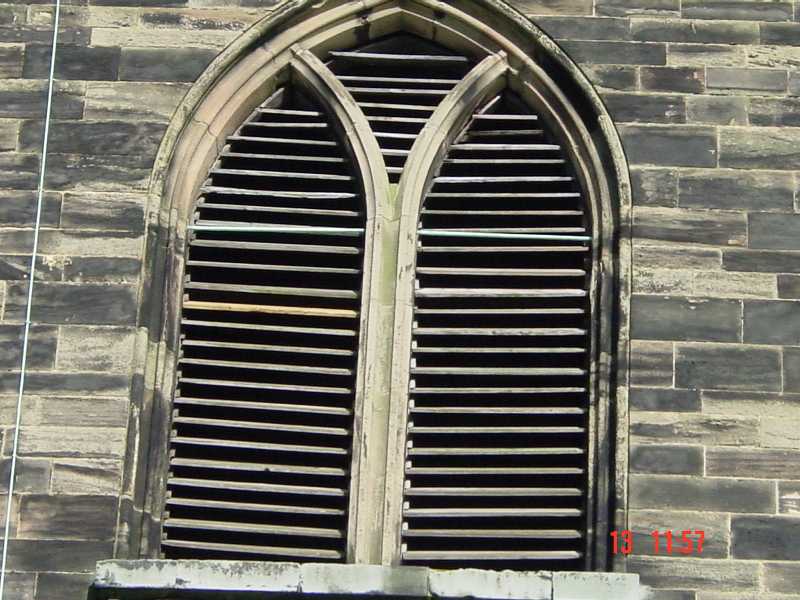|
|
The stripped down plumber blocks with the gudgeons removed and the broken bearing cases. At the top of the picture the broken spoke from the wheel of the 4th can be seen. | ||
|
|
|||
|
|
|||
|
|
|||
|
|
The new gudgeon bolts being cut to size | ||
 |
The wheel from the fifth showing the broken and missing shrouding and sole. | ||
|
|
|||
 |
|
||
 |
|
||
|
|
The south window showing the polycarbonate sheeting to provide some protection to the bells, fittings and frame from the rain and the snow which has taken its toll over the decades.
|
||